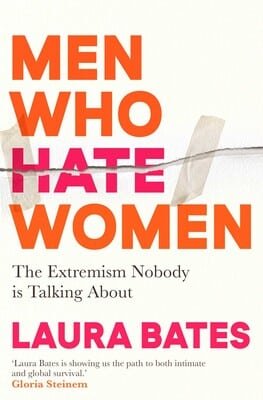Nothing quite says ‘We’ve got a national crisis that we don’t know how to solve’ like a knee-jerk reaction from the Government.
And that’s exactly what’s happened following a round table discussion with Kier Starmer, Jack Thorne (who interestingly enough co-created the 4-part drama – we’ll come on to that later), and representatives from the NSCPCC, Tender, and The Children’s Society.
Kier Starmer’s verdict was that Adolescence should be available to, and shown in, schools across the UK.
I have many, many problems with this initiative. And in this blog post, I will break these down.
What is Adolescence?
Adolescence is a Netflix drama, released in 2025 to much critical acclaim and a tonne of discussion.
The series has been praised for its unique ‘one-take’ episodes and how it delves into pressing issues like incel culture and violence against women and girls (VAWG).
The official description for Adolescence is:
When a 13-year-old is accused of the murder of a classmate, his family, therapist and the detective in charge are all left asking: what really happened?
However good it’s reviews are, though, it’s important to question the suitability of using entertainment media as educational tools without a comprehensive, trauma-informed strategy.
Sidenote: This discussion isn’t a critique of the show’s creators or its talented cast. I think Stephen Graham is amazing (especially in season 5 of Line of Duty). But instead, this post is to explore the suitability of showing this drama in the classroom and the potential implications of doing so.

Full transparency: I haven’t watched Adolescence yet.
Whilst you might think this is ironic considering my stance with this blog post, my reason is simple.
I don’t want to watch it…yet.
Where I’m at in my life and healing process currently, I don’t need to be presented with these issues in the comfort of my own home. I know how I can respond to dramas of this nature and at the moment, I know I’m not in the headspace to watch it.
That’s not to say that I’ll never watch it; but right now the timing just isn’t right.
And this point is key for some of the discussion I’ll come to later in this post
What is ‘Incel’ Culture
The term ‘incel’ stands for ‘involuntary celibate.’ It refers to individuals, predominantly men, who perceive themselves as unable to form romantic or sexual relationships despite desiring them.
This subculture has gained notoriety for fostering extreme misogynistic views, with members often expressing hostility towards women, whom they blame for their perceived celibacy.
People in the incel community (who are nearly all men) believe that the reason that they are involuntarily celibate is because their physical appearance is substandard and therefore they are undesirable to women.
Men with these beliefs about themselves then gravitate towards online communities that promote this thought process that they are not good enough. Extreme examples of these views are men who feel that women need to be punished for their involuntary celibacy.
Operating mainly online, incel communities can serve as echo chambers that reinforce negative beliefs and, in extreme cases, advocate for or glorify violence against women.
It’s a disgusting thought process.
It’s misogynistic.
And it needs to stop.
If you want a deep dive into incel culture, I’d highly recommend reading ‘Men Who Hate Women’ by Laura Bates.

The Rise of Incel Culture in UK Schools
Alarmingly, incel culture is making inroads into UK educational settings.
Teachers have reported instances where students exhibit behaviours and attitudes aligned with incel ideologies, leading to referrals to the Prevent counter-terrorism programme.
This trend underscores the urgent need for schools to be equipped with the knowledge and tools to address and counteract such harmful narratives.
But what makes me raise my eyebrows at this knee-jerk reaction to showing Adolescence in schools is as if this is a new problem that we’re just waking up to.
News reports and the work of Laura Bates’ that I previously referred to, have been around for years at this point. And just one look at Google already provides plenty of resources targeted at addressing this problem.
Andrew Tate: A Case Study in Modern Misogyny
Andrew Tate, a former kickboxer turned social media influencer, has garnered significant attention for his overtly misogynistic views.
His content, which has gained substantial traction among young audiences, often portrays women as inferior and advocates for traditional, patriarchal gender roles.
Tate’s influence has become so pervasive that teachers and parents have expressed concerns about his impact on teenage boys, noting a rise in sexist attitudes and behaviours among students who consume his content.
Earlier in 2025, Spotify FINALLY agreed to remove Tate’s paid-for courses that advocate violence against women and girls.
But removing this content from the internet isn’t enough.
There are still too many resources that are freely available online that promote incel culture and VAWG. These come in the form of YouTube videos, podcasts, blogs, Reddit threads, internet forums, Facebook Groups, and websites.

Understanding Violence Against Women and Girls (VAWG)
VAWG encompasses a range of abusive behaviours directed at women and girls, including domestic violence, sexual assault, harassment, and coercive control.
Addressing VAWG is crucial not only for the well-being of women and girls but also for fostering a safer and more equitable society.
Incel culture directly promotes violence against women and girls, making it an urgent problem that needs to be addressed.
Entertainment vs. Education: Understanding the Distinction
My first issue with showing Adolescence in schools is that this drama was made with entertainment in mind and not education.
While it offers a narrative on critical societal issues, its core objective is to engage viewers through storytelling.
Why?
Because without that engagement, Netflix isn’t making money.
It’s similar to how ‘Girl, Interrupted’ and ‘One Flew Over the Cuckoo’s Nest’ weren’t made to educate about mental health. Adolescence isn’t designed to educate.
It might be designed to evoke emotion, to prompt deep thinking, to consider how we as individuals contribute to these societal issues. But this isn’t the same as educating someone.
Introducing such content into educational environments without proper contextualisation and support can lead to misunderstandings and unintended consequences.
Educational materials, especially those that are so emotive and potentially traumatic need to be designed with clear learning objectives, taking into account the diverse backgrounds and experiences of students.
Understanding Our Students
The fact remains that even with the best will in the world, we don’t always know everything about a student’s background and past experiences.
I regularly teach level 1 safeguarding, and before teaching these lessons I always notify other staff in the department of what I’m teaching in the lesson. The reason for this is because if a student needs to leave the classroom because of the content, someone can be around to support them.
I’m curious to know if any thought has been given to teachers supporting students watching Adolescence in schools and also if any thought has been given to student support services for students who are re-traumatised following watching this type of content.
The Necessity of a Trauma-Informed Approach
The next issue that I have with showing Adolescence in schools is because such delivery needs to be trauma-informed.
Introducing topics like incel culture and VAWG into the classroom requires sensitivity and awareness.
Many students and staff may have personal experiences related to these issues.
Without a trauma-informed approach, discussions can inadvertently retraumatise individuals or make them feel unsafe. It’s essential to create an environment where participants feel supported, and where conversations are framed to empower rather than victimise.
This involves proper training for educators, the establishment of clear guidelines, and access to support services.
If you want more information about being trauma-informed, I’d highly recommend looking at the work of Dr. Jessica Taylor and Jaime Shrive.
The Role of Educators and the Importance of Training
I mentioned previously that we need to consider how students can be re-traumatised watching this content.
But we also need to consider the re-traumatisation of teaching staff as well.
There needs to be a consideration as to where this content will slot into the curriculum.
English lessons? Drama lessons? PSHE?
And how are staff being supported to deliver this content?
What training are they receiving?
What follow up support will be in place?
Teachers are at the forefront of delivering content and facilitating discussions in schools.
However, expecting them to navigate complex and sensitive topics without adequate training is both unfair and ineffective.
Sexual violence prevention work is a specialist skill, and the assumption that any teacher can undertake it without training is a common and unhelpful misconception.
It also goes back to the naive assumption that training and education solve everything. Because they don’t. Training and education is just part of a complex puzzle that contributes to societal changes.
The Implications of Government-Endorsed Content
The government’s endorsement of Adolescence as a resource for schools raises another concern with me. This is because such an endorsement questions about the selection process for educational materials.
While the series has garnered critical acclaim and sparked important conversations, it’s important to consider whether entertainment media should take precedence over resources developed by educational experts and organisations specialising in VAWG prevention.
Prioritising content from entertainment platforms may inadvertently sideline evidence-based resources crafted specifically for educational purposes.
Jack Thorne’s Representation at the Meeting with Kier Starmer
I mentioned at the beginning of this post that Jack Thorne was present at the meeting where Kier Starmer made this decision to show Adolescence in schools.
Jack Thorne is the co-creator of this drama.
Also present were producers Emily Feller and Jo Johnson.
I have a problem with this.
And the problem I have is because these 3 people (who I do not know and I’m sure are lovely people in real-life) have a bias towards this piece of work.
After all, it’s THEIR drama that THEY created.
So, I’m pretty sure they were all for having this drama shown in schools.
Why?
Because the drama is streamed on Netflix. And therefore, there will be a price tag for the UK Government to make Adolescence in schools. I could be completely wrong (and I’m happy to be corrected), but surely this roll-out then benefits the individuals involved in creating this piece? And if it’s not directly, surely indirectly in the future?
It seems that there was bias in the room when this decision was being made and I’d love to know exactly what the conversation entailed in order to dive deeper into this.
All I’m saying at this point is that the conversation seemed biased from the start.
Conclusion: Prioritising Thoughtful Educational Strategies
While Adolescence brings critical issues about incel culture to the forefront, its integration into schools should not be a knee-jerk reaction.
Addressing incel culture and VAWG requires more than just exposing students to related content; it demands a comprehensive, trauma-informed strategy that includes educator training, student support systems, and collaboration with specialists in the field.
By prioritising thoughtful and evidence-based approaches, we can create educational environments that not only inform but also empower both teachers, teaching staff, and students to contribute to a safer and more respectful society.



